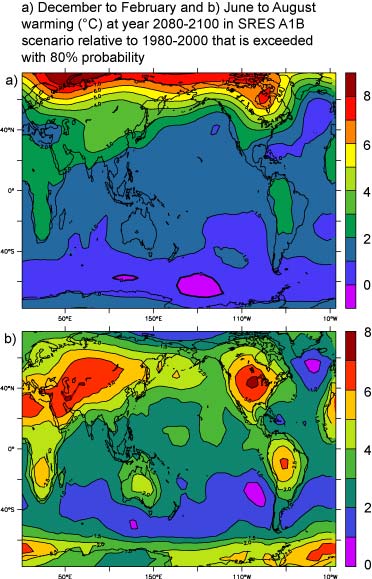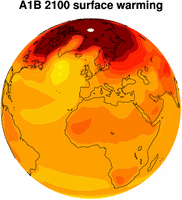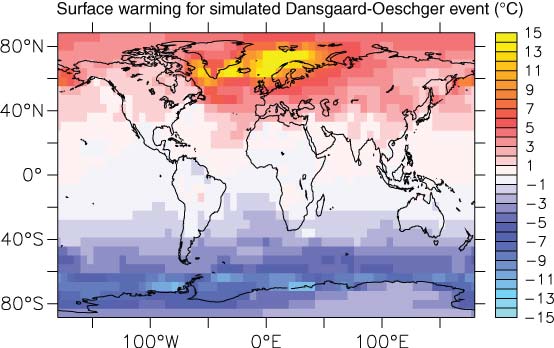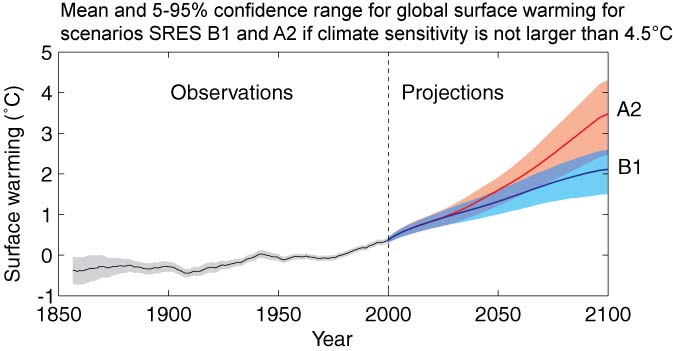Research interests
I use several climate models of different complexity, from intermediate complexity to general circulation models for my work. Below is a short summary on a few topics.
Process studies on the ocean thermohaline circulation
For my studies on the large-scale ocean thermohaline circulation, I use the Bern 2.5D Climate Model. This model is designed to study the role of the thermohaline circulation in the Earth climate system of the past, present and future. My early work focussed on the stability and dynamics of the thermohaline circulation on timescales of more than several decades and on spatial scales of more than a thousand kilometers. The simple parameterization of processes results in a computationally efficient climate model suitable for long-term integrations (up to millions of years) and large numbers of simulations not feasible with more complex models. This allows us to focus in detail on the mechanisms and processes of natural climate variability and on the potential anthropogenic climate change.
Probabilistic projections with very large model ensembles
The extreme efficiency of the zonally averaged climate model also allows to calculate ensemble simulations of several thousand members. This approach has recently been used to demonstrate a strategy of how probabilistic forecasts of climate change over the next century can be obtained. The idea is to run a model many times with different parameter combinations and then used observations to constrain the ensemble, i.e. give those model versions more weight that agree well with observations. Technically, these are Bayesian methods, and the result of this procedure is a probability density function of future warming given the observations of the past century.
Further details can be found in DownloadKnutti et al., Nature 2002 (PDF, 205 KB)vertical_align_bottom, or in the related DownloadNews&Views (PDF, 112 KB)vertical_align_bottom.
Regional probabilistic projections from comprehensive models

Although global mean temperature is a good overall indicator of the expected changes, people are more interested in regional climate projections, since those determine local impacts. We used output from twenty different coupled atmosphere ocean general circulation models and a Bayesian method to obtain regional probabilistic projections of future warming. Instead of calculating just a model mean, this allows for instance to quantify the warming that is likely to occur, i.e. the warming that will be exceeded with at 80% probability. Such models also allow to differentiate between summer and winter changes, and to quantify trends variability and extreme events.

Further details can be found in DownloadFurrer et al. GRL 2007 (PDF, 505 KB)vertical_align_bottom.
Paleoclimate modeling
Using the Ecbilt-CLIO climate model we also studied how the ocean connects the polar regions of Greenland and Antarctica during the abrupt climate events in the last ice age, about 50,000 years ago. For the first time, we proposed an improved 'bipolar seesaw' concept, the so-called 'thermal freshwater seesaw' that explains most of the timing and amplitude in the Greenland and Antarctic temperature proxies as well as sea level. The model also captures surprisingly many features of the spatial patterns of temperature and precipitation changes as reconstructed from proxy data. The figure below shows the surface temperature difference simulated by the model when the Atlantic thermohaline circulation switches from a collapsed state to an active state with deepwater formation in the North Atlantic. The associated increased northward heat transport of the ocean causes the North Atlantic to warm by 15 degrees C or more within several decades and the Southern Ocean to cool (the seesaw).

Further details can be found in DownloadKnutti et al., Nature 2004 (PDF, 771 KB)vertical_align_bottom, or in the related DownloadNews&Views (PDF, 125 KB)vertical_align_bottom

